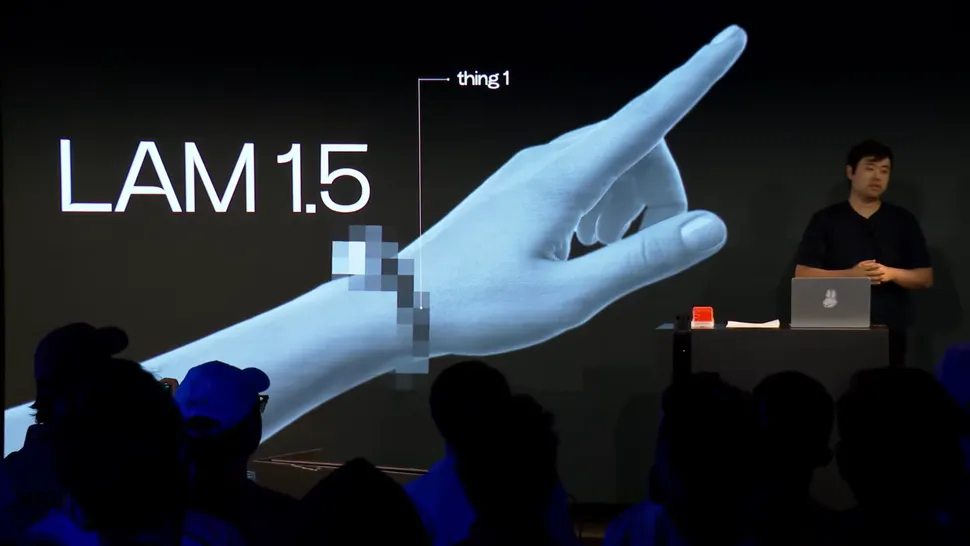Rabbit R1: Could this AI device replace your phone with its new wearable camera?
It's only just been released, but the Rabbit R1 is to get a wearable camera to add to its AI powers announced at shipping party

Back at CES, right at the beginning of 2024, Rabbit CEO Jesse Lyu announced the Rabbit R1 – the cute orange device entering the race to replace the smartphone with a portable AI.
This week, at the TWA hotel in New York, the device saw the light of day (or, more accurately, party lights and presentation displays) at a 'shipping party' in which the devices off the production line were handed to enthusiastic R1 buyers. Not, though, before Lyu could share plans for the device in what might have been a very enthusiastic room but what is currently a very hostile climate for the tech.
The problem is that, following a series of very negative reviews of the $699 Humane Pin – another promising device nominally in this category – just a few weeks ago, there are a lot of people asking "Why can't we just add AI features to our phones?" It's not a bad question, and it's not unreasonable to assume that there is a certain level of ambition and ego involved in attempting to be – and let's be fair here – the iPhone of AI.

The Rabbit R1, however, definitely comes at things differently. The key promise is the AI tech – it's fair to say that everyone in the room understands that the $199 device might serve as a focal point, as much for investors and to build around than anything else. In a way it has to help people think of an operating system which involves even less interaction than we're used to now, though it does have a physical analog scroll wheel.
In his presentation, Lyu showed the device answering complicated multi-part questions live – over a 4G LTE connection – clearly aiming to show the relevance of the tech in general. He also used it to do some image generation on request (like some seen in our best AI image generation).
The quality of the AI's ability to understand – the Large Language Model – was impressive, though one of the demos (which Lyu likened to a crucial basic programming test, the "hello world") was to recognise an image – was achieved using the built-in camera.
He said that, in future, to extend the devices powers a wearable camera would be coming which would offer the potential for the AI to recognise things and, perhaps gestures, and understand the controls required (the example he gave was to point it at a thermostat, though why you wouldn't just ask the system to turn the heating up is beyond me).
The best camera deals, reviews, product advice, and unmissable photography news, direct to your inbox!

Everything done is kept on the Rabbit hole – and indeed the web portal is where some of the most impressive things were happening because the real promise of Rabbit seems to be the ability for anyone to get involved in the training.
This seems to be where Rabbit is getting things right – it has an enthusiastic audience of tech enthusiasts, a low-cost device with the Rabbit R1 at $199 / £162 and no additional subscription for access to the Rabbit AI).
Perhaps this is why some are seeing them as a Raspberry Pi for AI, though by the looks of the site – and the sounds of the plans for Rabbit OS – the ambitions are bigger. For now, you can order the R1 directly from Rabbit and get one by June. We'll share more about the wearable camera when we find out.

With over 20 years of expertise as a tech journalist, Adam brings a wealth of knowledge across a vast number of product categories, including timelapse cameras, home security cameras, NVR cameras, photography books, webcams, 3D printers and 3D scanners, borescopes, radar detectors… and, above all, drones.
Adam is our resident expert on all aspects of camera drones and drone photography, from buying guides on the best choices for aerial photographers of all ability levels to the latest rules and regulations on piloting drones.
He is the author of a number of books including The Complete Guide to Drones, The Smart Smart Home Handbook, 101 Tips for DSLR Video and The Drone Pilot's Handbook.
